Today, we will cover the latest detailed eclipse outlook. Also, Dwight Silverman joins us to offer a virtual viewing guide to the eclipse if you’re unable to get to it or if you’re under clouds. There are some cool ways to engage with the event, as you’ll see!
Headlines
- Cloud cover likely to obscure the eclipse in much of Texas and portions of western New York or northeast Ohio.
- All other areas along the totality path have potential to see the eclipse in some capacity.
- Best bets right now are probably Indianapolis, Sherbrooke, Quebec, or Caribou, Maine.
A full eclipse forecast from south to north
We’ll work south to north today to clue everyone in on the latest and greatest cloud forecasts as of this morning.
South Texas/Central Texas
For the Rio Grande Valley and much of south and central Texas, the trouble on Monday will be that all three cloud layers we tend to track will be likely to have clouds. There should be a blanket of high clouds, a healthy blanket of mid-level clouds, and at least scattered low clouds.
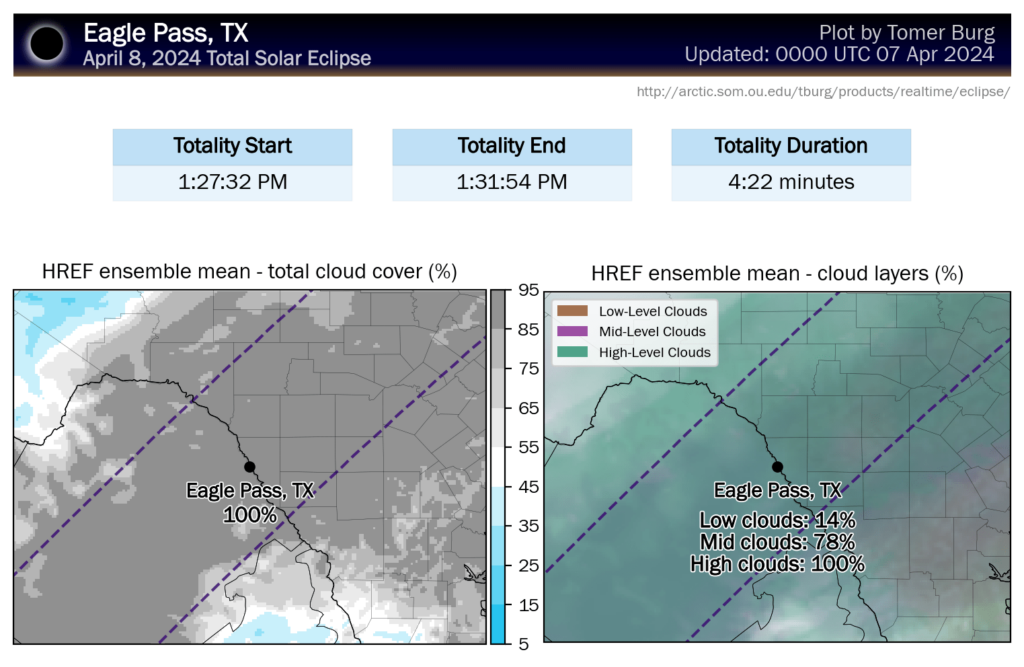
The end result will be that the majority of people in the path have clouds for the eclipse. A select few (impossible to predict where) may, may end up with thin enough high clouds and a break in the mid-level and lower clouds that the eclipse could be visible. But I wouldn’t bank on that. Verdict: Disappointing.
North Texas
The forecast gets more difficult north and east of Austin, which is better news for North Texas. We know that high clouds will be in place. While that will impact eclipse viewing, in the right scenario, it could also make things more dramatic looking.
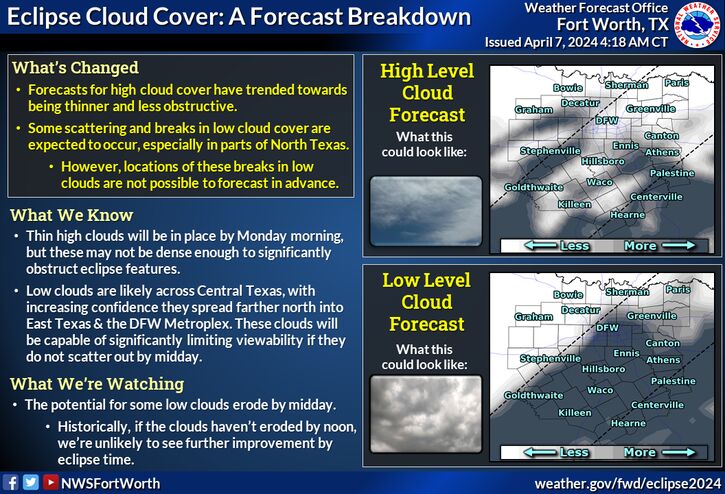
The problem in North Texas will be lower clouds. The hope is that some of them will scour out in the late morning. But that’s an impossibility to predict, so you’ll be rolling the dice no matter what tomorrow. Still, your odds here are better than to the south. Verdict: Worth a shot.
Arkansas
While not perfect, Arkansas conditions look pretty decent right now. The southern part of the state will have the same struggles as North Texas, with some low clouds potentially spoiling the view. But as you come northward, the chances of seeing the eclipse with just some high clouds increases.
It’s especially good north and east of Little Rock and west of Memphis. Verdict: Maybe good!
Missouri, Illinois, and Kentucky
We’ve got mostly decent conditions expected in this area. High clouds are likely, but low and mid-level clouds are not.
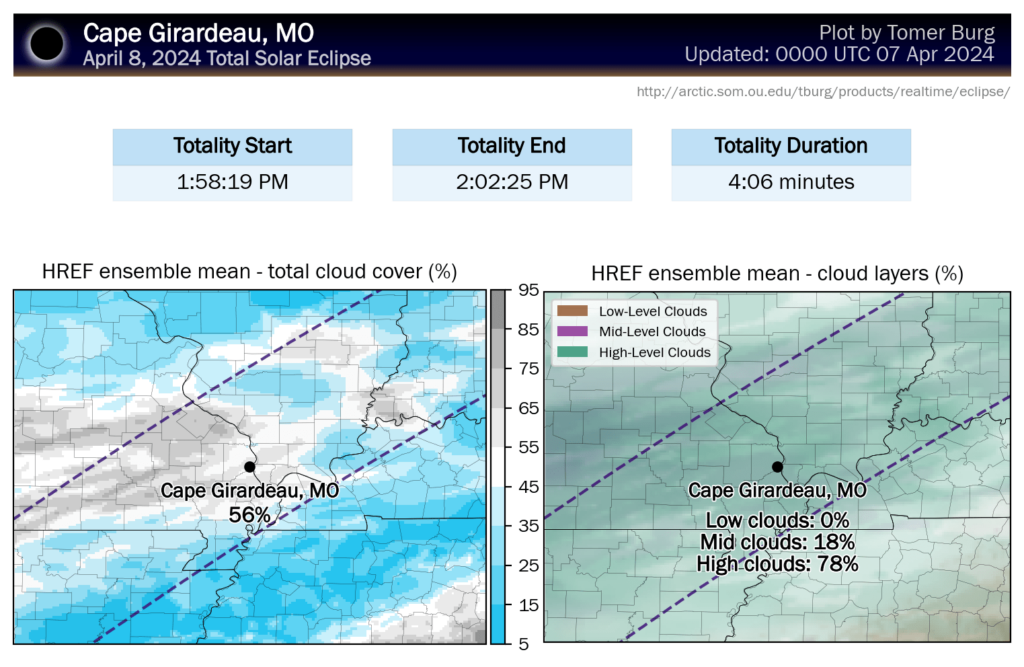
This should allow for a good view in most places, though you may need to maneuver just a little. Verdict: Mostly good!
Indiana and Ohio
Purdue in the national championship game, and minimal clouds for the eclipse? A little something for everyone in Indiana.
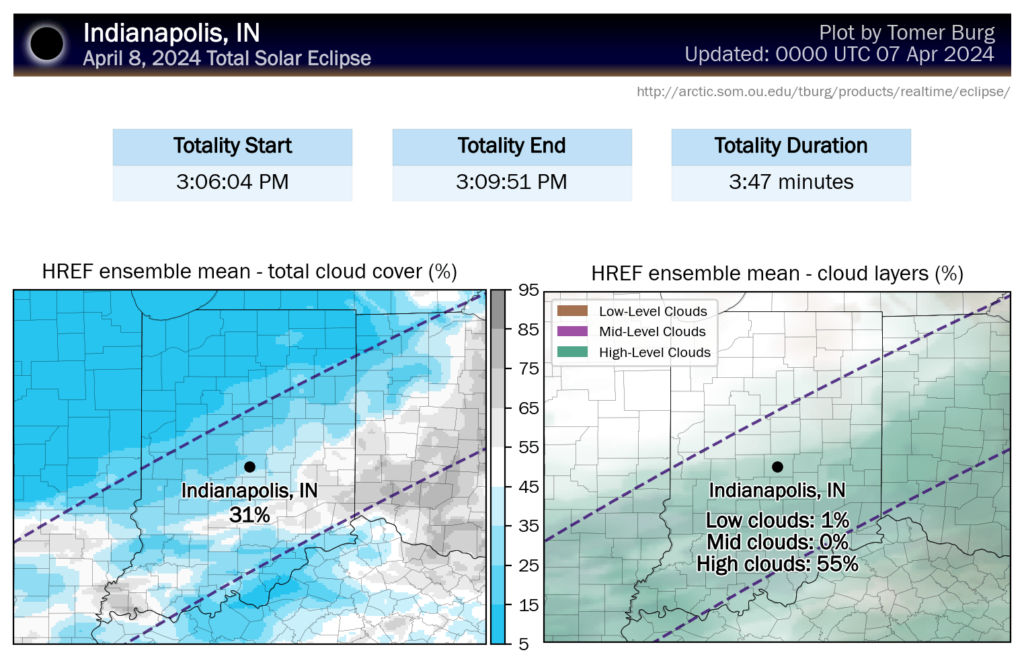
Conditions look good here now, with no significant issues expected. Ohio looks a little more mixed. Low level clouds may linger in Northeast Ohio, while high clouds persist elsewhere. Not a total loss, but there are some risks the farther northeast in Ohio you’ll be.
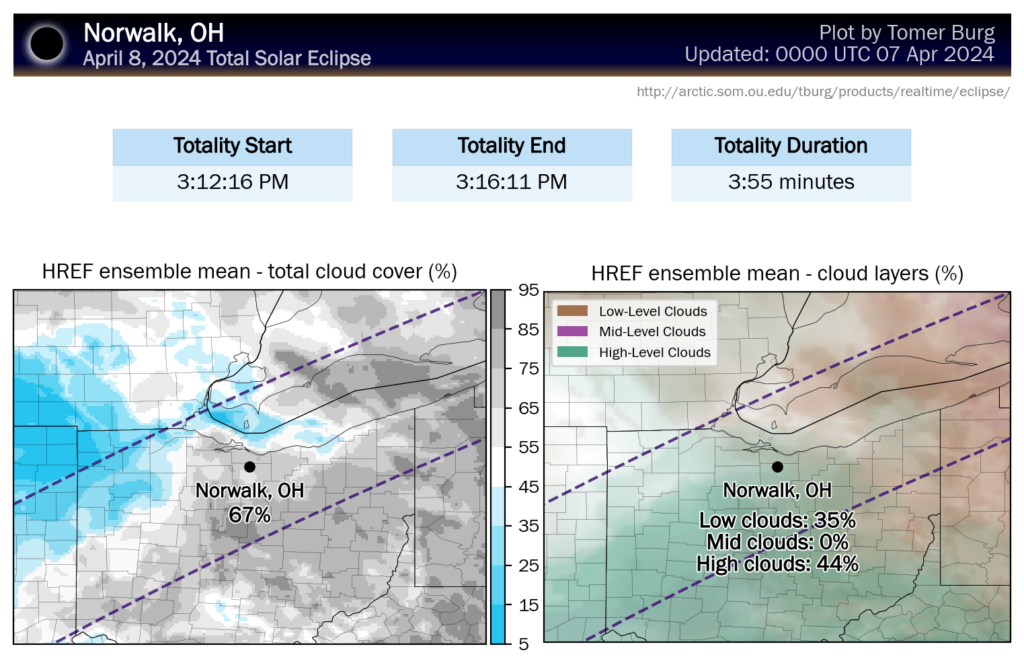
Verdict: Great in Indiana & NW Ohio, very mixed in NE Ohio.
New York
Western New York will have some troubles I think, with cloud cover persisting. As you work toward the Tug Hill Plateau and North Country, things will improve.
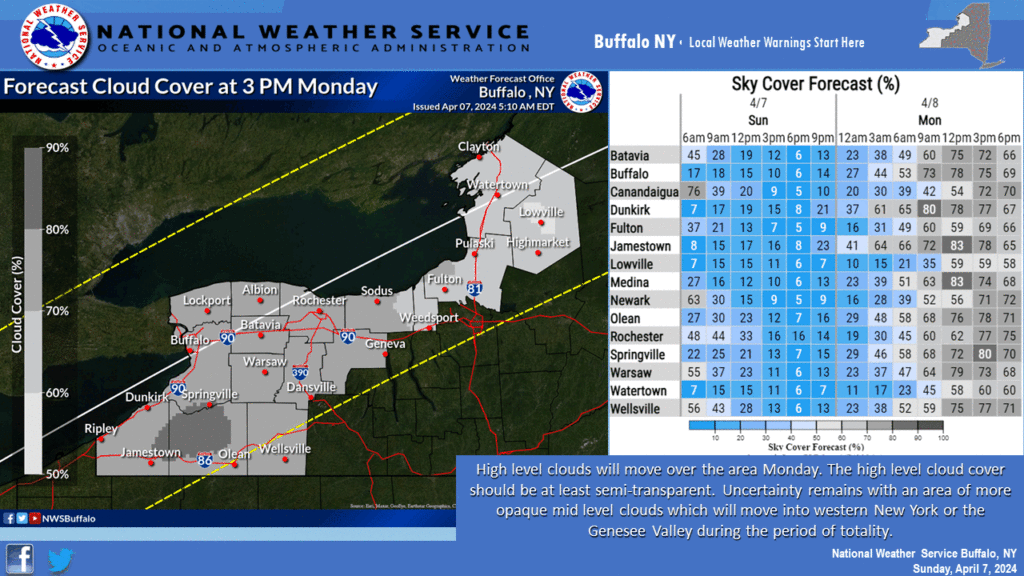
You probably want to go as far north and east as possible for the best viewing conditions, or at the least the best odds of them. Verdict: Good toward Lake Champlain, with increasing risks southwest.
Northern New England & Canada
High clouds will probably impact viewing (not enough to obscure it completely though) as you head into the northeast Adirondacks of New York and Burlington, VT.
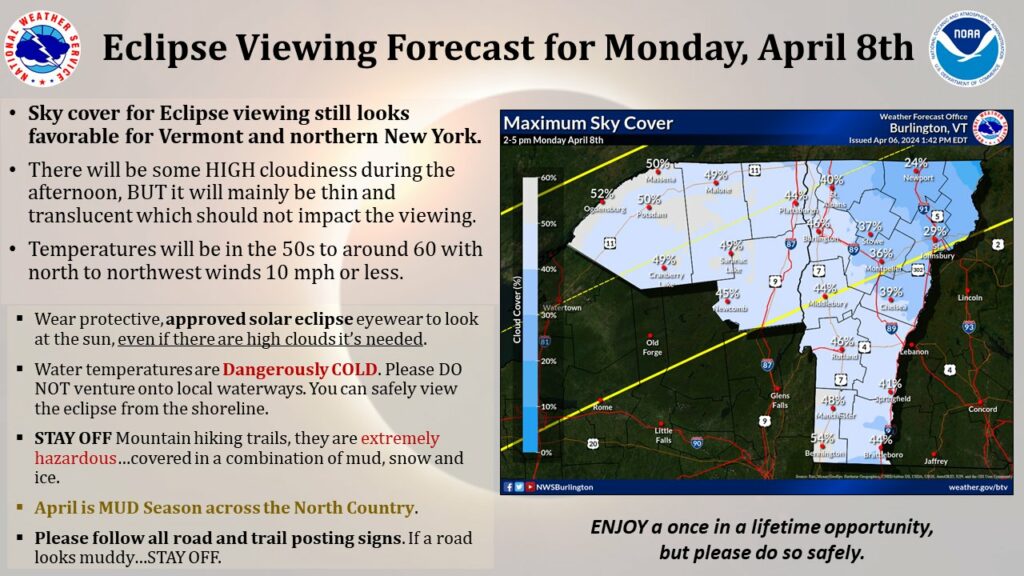
As you head into Quebec and Maine and New Brunswick it looks spectacular. Clear skies win out.
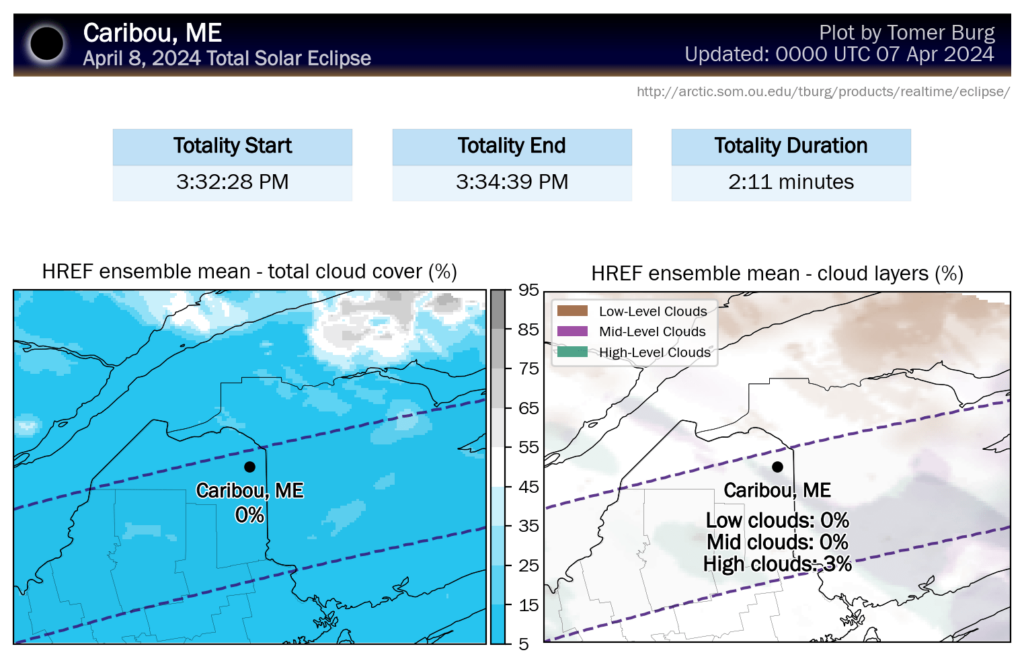
We see few risks here, so if you’re setting up shop in Montreal, Sherbrooke, Caribou, or Houlton east into New Brunswick and PEI, you will have prime viewing. Clouds may begin to sneak in for Newfoundland or Labrador. Verdict: Yes, this is the place.
How to view the eclipse if it’s cloudy or you can’t travel
Most people won’t be traveling to see Monday’s eclipse or may be disappoint by clouds, so we turned to Dwight Silverman to show us how technology can come to the rescue if you want to participate.
There are plenty of ways to watch the eclipse unfold in real time via broadcast and cable TV as well as streaming, with many options tracking the eclipse across the U.S.
If you prefer your TV delivered through more traditional means, both over-the-air and cable news channels will cover it (expect lots of picture-in-picture views as other news is reported). And if you subscribe to a faux-cable package of channels such as Sling TV, YouTube TV, Fubo or Sling, you’ll be able to watch using the usual suspects on those platforms.
But some of the most interesting and science-geeky outlets will be specialty streamers, including the biggest kahuna of them all: NASA, which will have multiple options.
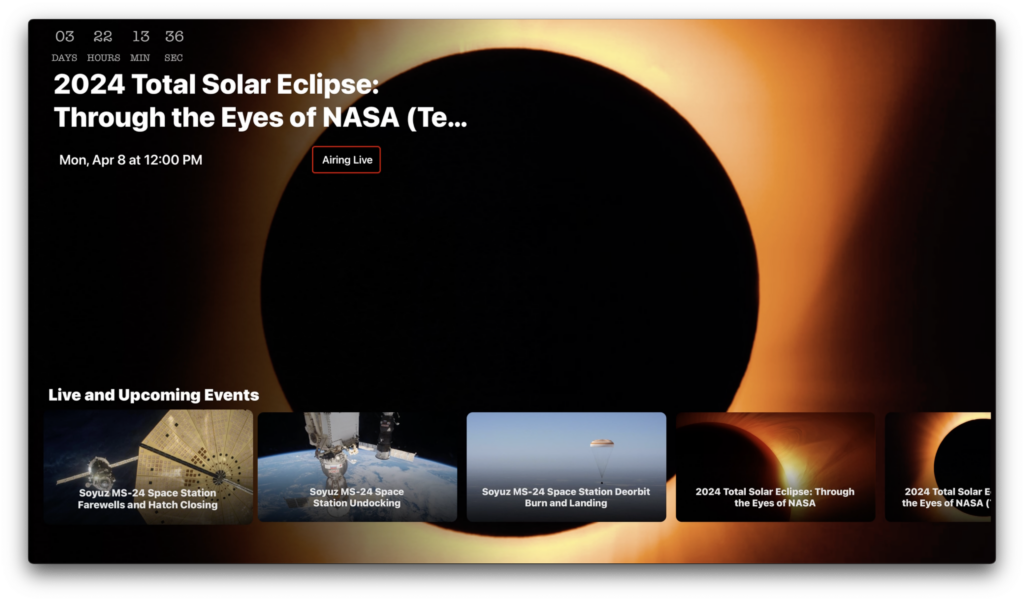
NASA-TV, the space agency’s classic public channel, will offer coverage through its apps on platforms such as Apple TV, Roku, Hulu, DirecTV, Dish Network, Google Fiber and Amazon Fire TV. If you don’t have the app or channel installed, you can pull it in from your platform’s app store.
Alternatively, there’s NASA’s new streaming initiative NASA+. Try the NASA+ web page, a YouTube channel, as well as NASA app for iOS and Android. (The iOS app will also work on Apple’s new Vision Pro mixed-reality headset, potentially making it appear as though the eclipse is floating right in front of you!)
NASA will offer two eclipse feeds on its platforms – one with commentary, and another, commentary-free feed directly from a telescope.
Of course, NASA’s not the only streaming game in town. Other, space- and science-oriented sites will have their own live feeds including:
- Exploratorium, the science museum in San Francisco.
- Space.com, the popular space website.
- The National Eclipse Ballooning Project features livestreams from dozens of teams from high school and colleges around the country using weather balloons to track the eclipse and glean scientific data from it.
- Slooh is another education-focused site that will have a telescope-based feed.
- The Virtual Telescope Project will offer views via remotely controlled robotic telescopes.
Happy eclipse viewing (even under cloudy skies)!
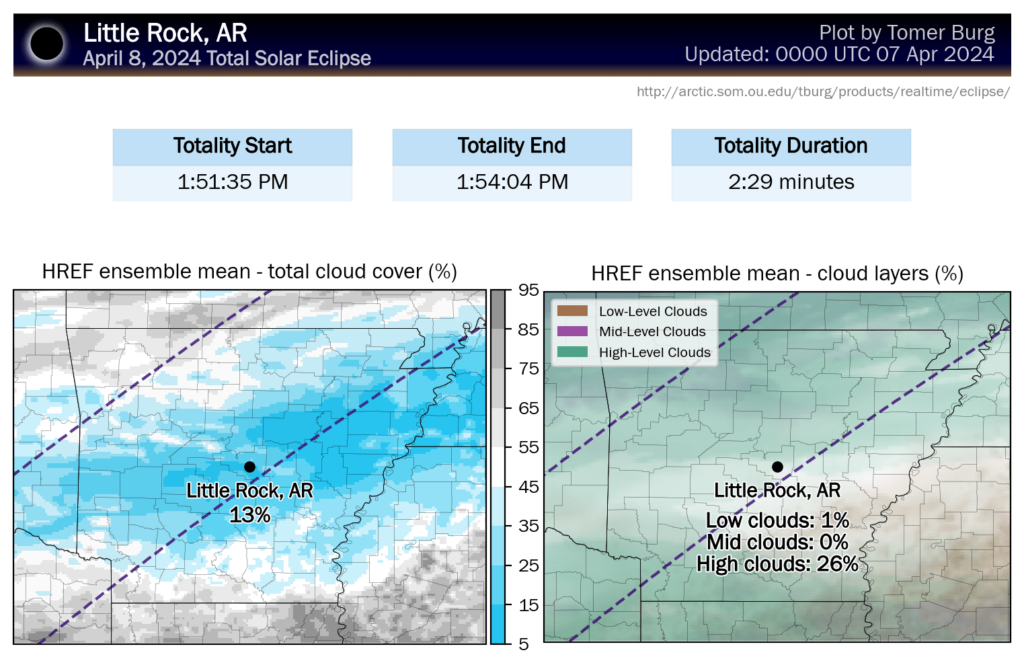
awesome info & tips 😎 thanks, Matt!
🌹
You guys are AMAZING! Thanks for the detailed south to north!
Props for publishing those links!